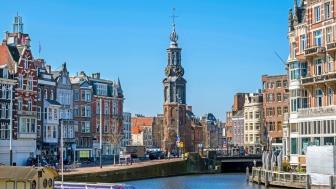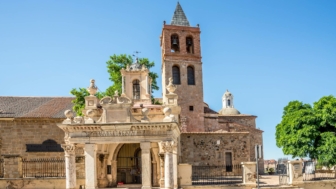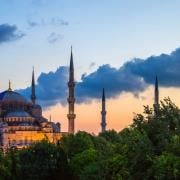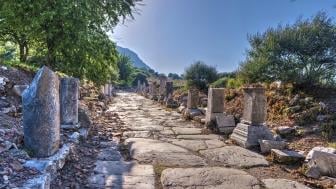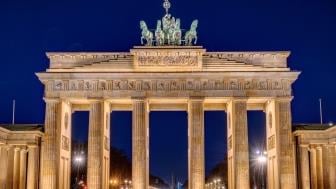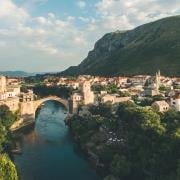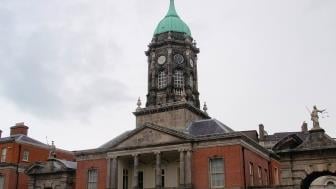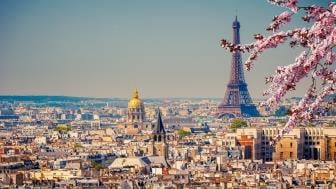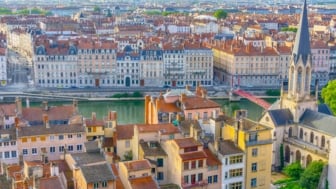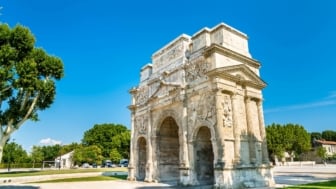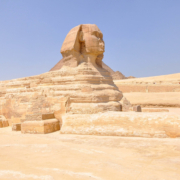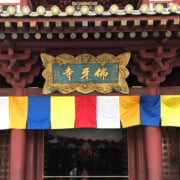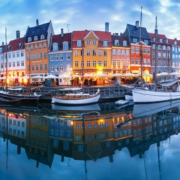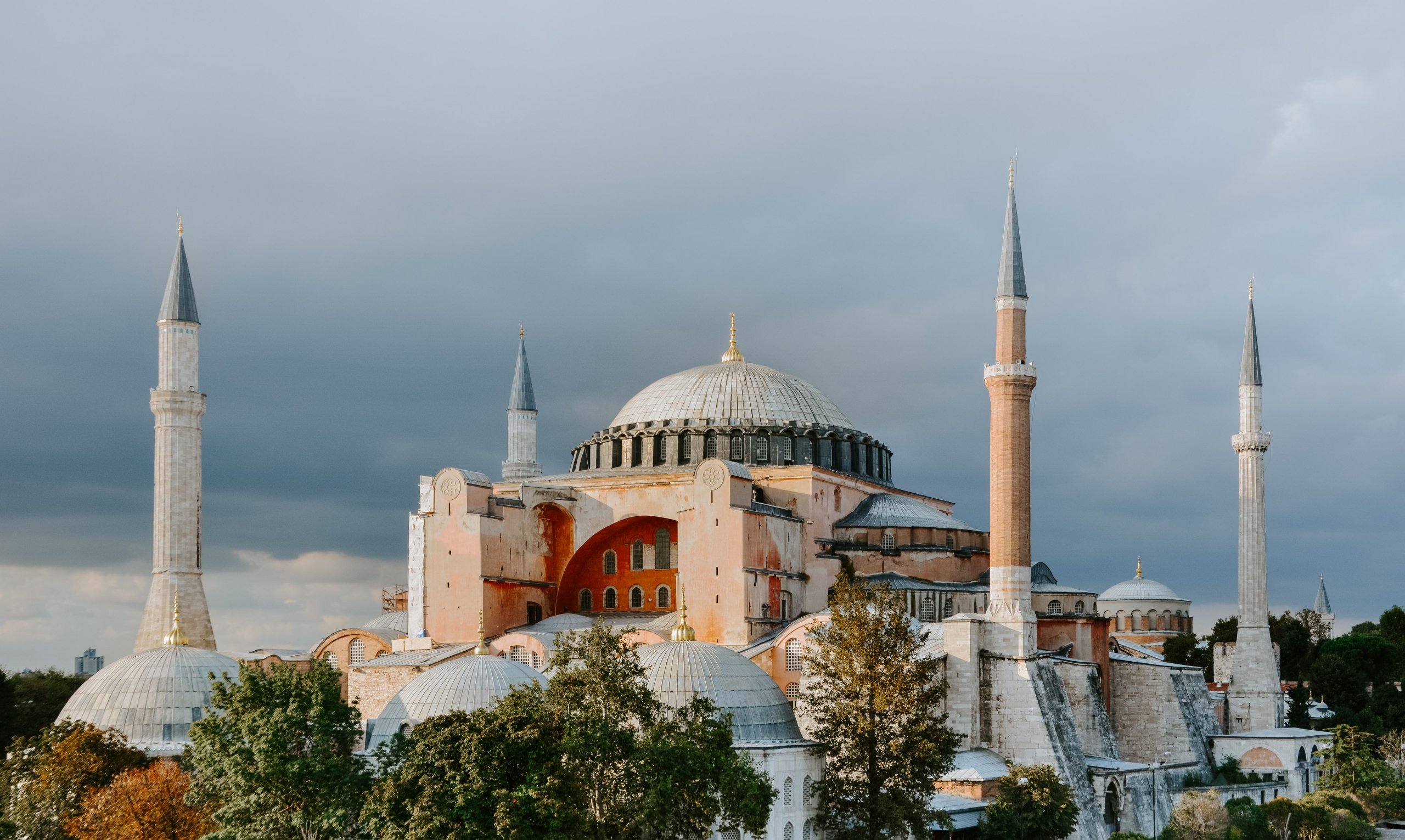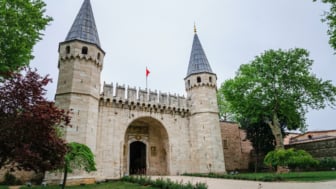Located in Istanbul since 537 AD, Hagia Sophia has been bearing witness to the city’s rich and diverse history for over 1400 years. The building’s impressive Byzantine architecture and fascinating interior where marble pillars and gold mosaics adorn the halls, showcase the wealth and power of Byzantine emperors and Ottomans. Discover Hagia Sophia’s turbulent history and learn why it is considered one of the world’s most significant landmarks.
A brief history of Hagia Sophia
Hagia Sophia (Holy Wisdom in English) is dedicated to the God of Wisdom. Initially, built in the Middle Ages as a Greek Orthodox Christian patriarchal cathedral under the orders of the Byzantine emperor Justinian I, Agia Sophia later served as Roman Catholic cathedral from 1204 until 1261 and was converted into an Ottoman imperial mosque in 1453. It remained the first imperial mosque of Istanbul until 1931 when it underwent secularization and reopened as a museum in 1935. Throughout the centuries, destructions befell the architectural wonder on more than one occasion and underwent reconstruction several times. Hagia Sophia is said to have changed the history of architecture entirely and is well-known for being the epitome of Byzantine architecture.
Who built the first Hagia Sophia?
Byzantine Emperor Constantius started construction of the first Hagia Sophia in 360 C.E. However, 44 years later the building burned to the ground due to political riots that took place in Constantinople—present day, Istanbul.
Who built the second Hagia Sophia?
Emperor Theodosius II rebuilt the structure within 11 years after the original damage inaugurating it on the 10th October 415 C.E. This time, the basilica survived for 117 years until it was burned to the ground for the second time during the Nika riots. Luckily, several marble blocks survived and are nowadays exhibited to the public in a designated area adjacent to the museum’s entrance.
-
Duration: 1h 40min
Who built the third Hagia Sophia?
The calendar shows the year 527 when Emperor Justinian I comes to reign and 532 when he decides to completely raze the remaining parts of the destroyed building and have the well-known architects Isidoros and Anthemios construct the third in row third basilica. It took five years and 10.000 workers to complete the imposing building that managed to survive throughout the centuries and until nowadays, adorns the city of Istanbul.
Hagia Sophia’s transformations over the centuries
Originally built to serve as an Eastern Orthodox cathedral, Hagia Sophia was hosting the Byzantine Emperors coronation ceremonies and was serving as the seat of the ecumenical patriarch of Constantinople for over 900 years. In 1204 when Constantinople was occupied by the Latin Empire, the building was transformed into a Roman Catholic cathedral and by the time the Byzantines reclaimed control in 1261, it had suffered severe damages. It took 93 years for the church to be fully repaired and re-open to the public. Constantinople became the present-day Istanbul when the city came under the Ottoman Empire on 29 May 1453. Two days later Sultan Mehmet II attended the first-noon prayer in Hagia Sophia marking the basilica’s conversion into the first imperial mosque of Istanbul.

The state of Hagia Sophia nowadays
The first President of Turkey, Mustafa Kemal Atatürk, ordered the secularization of Hagia Sophia and transformed it into a museum operated by the Turkish government in 1935. Today, Hagia Sophia attracts three million visitors annually and is considered one of the world’s most popular museums and Istanbul’s top attractions. In 2019, the current President of Turkey, Recep Tayyip Erdoğan said he wants to turn Hagia Sophia from a museum to a mosque. However, as Hagia Sophia is a designated UNESCO World Heritage site, this change would require approval from UNESCO’s World Heritage Committee.
-
Duration: 1h 30min
The impressive interior and exterior design of Hagia Sophia
The basilica spans 180 feet (55 meters) in height, is 269 feet (82 meters) long and 240 feet (73 meters) wide. Inside the museum, you’ll witness the Byzantine-style architecture, including the massive marble pillars flaunting the outer edges, the mosaics of Jesus Christ, the Virgin Mary, and Byzantine emperors, and the depictions of the many angelic beings. Along with the Byzantine style, things like the chandeliers represent elements of Islamic art. The combination of the two architectural styles creates Hagia Sophia’s incredible interior and exterior design and no matter your beliefs or background it is definitely worth seeing it in person. On the ground floor and in the galleries there are 107 columns in total and if you look carefully, you’ll notice that the south gallery is embellished by a Viking graffiti.

With Clio Muse guided tour to Hagia Sophia, you’ll have the chance to explore the basilica’s glorious past through 77 unique stories that showcase the museum’s exhibits and narrate the architectural masterpiece’s story. Skip the line with ‘Hagia Sophia: The Wisdom of God’ e-ticket and hit play on your phone to start the engaging self-guided audio tour sooner.





















